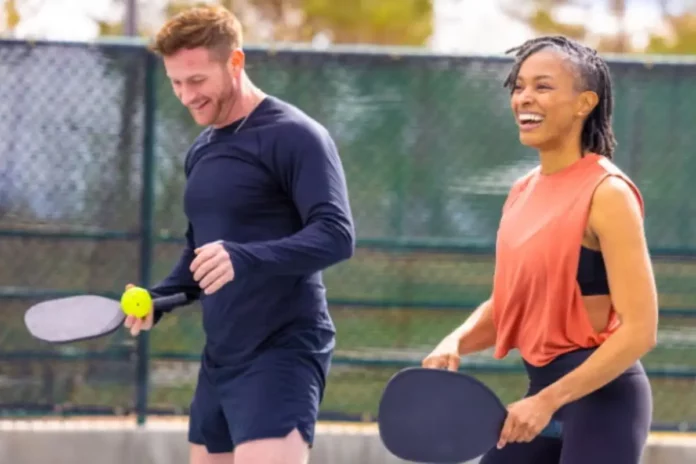Evolution of Pickleball: Pickleball is no longer just for retirees. The sport is seeing a surge in younger players, with the biggest increase in Canada coming from the 35-54 age group in 2024, according to Pickleball Canada. Gen Z participation grew by 16%, while in the U.S., 18-34-year-olds now make up 28.8% of players.
A mix of tennis, badminton, and table tennis, pickleball is played on a small court with paddles and a perforated plastic ball. Its popularity is rising due to its easy learning curve and fast-paced action. The game’s rapid growth has led to a shift from a casual backyard pastime to a competitive sport with pickleball tournaments.
From Backyard Game to Competitive Sport
Pickleball has evolved significantly from its origins as a family-friendly activity. Players now use high-tech paddles that can cost over $300, making the game faster and more dynamic.
With more competitive pickleball events, recreational players are training harder and entering pickleball tournaments at local, national, and international levels.
To meet the increasing demand for skill development, more players are incorporating structured training. Fitness programs specifically designed for pickleball are emerging, helping players improve agility, endurance, and power to match the game’s evolving pace.
Research Sheds Light on Competitive Play
Despite pickleball’s growth, research into its physical demands has been limited. Most studies focus on older recreational players, leaving gaps in knowledge about professional play.
However, a recent study published in the International Journal of Performance Analysis in Sport examined men’s professional doubles pickleball.
“A deeper understanding of pickleball’s competitive demands could help players and coaches optimize training sessions, enhancing performance, while also benefiting pickleball clubs and organizations in structuring their programs.” – (study authors from Spain)
The study analyzed eight professional matches, tracking 19 players with an average age of 27.9. Researchers reviewed 6,839 shots and found that the average match lasted 36.4 minutes, with most rallies taking 10.7 seconds. The rest time between rallies was 40% longer than the rally itself.
Players hit an average of 854.9 shots per game, and rallies typically consisted of five to six shots. The left-side player took the most shots, and forehand shots were the most common. The study also found that crosscourt shots were more frequent than same-side shots.
What This Means for Players
Understanding the demands of pickleball can help players improve their on-court strategies and off-court conditioning. Training programs that reflect the sport’s work-to-rest ratio, shot frequency, and match duration can better prepare players for competition.
Although pro players and casual enthusiasts may approach the game differently, knowing how pickleball is evolving can enhance overall performance.
For those aiming to compete, targeted training and game analysis can make a significant impact. Even for recreational players, adapting to the sport’s faster pace can lead to better skills and more enjoyable play.
News in Brief: Evolution of Pickleball
Pickleball is seeing a rise in younger players, with significant growth among Gen Z and middle-aged adults. The game is becoming faster and more competitive, prompting research into professional play. Understanding match data can help players refine their training and improve performance as the sport continues to evolve.
ALSO READ: Pickleball and U SPORTS: Can Canada’s Governing Body Keep Up with Pickleball’s Growth

